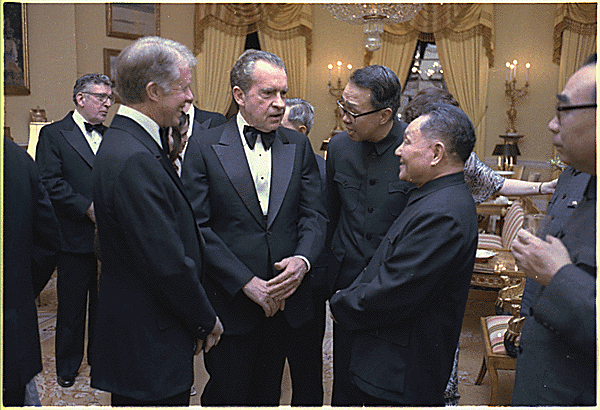The international dimensions of the Third Revolution’s apogee was already notorious, as the text notes. With the passing of time, the general picture of this apogee became even clearer, whether on account of the geographical and populational expansion of communist domination, the worldwide diffusion of Red propaganda and the weight of the communist parties in the Western world, or the penetration of communist tendencies into national cultures.

Willy Brandt (left) and Willi Stoph in Erfurt 1970. Egon Bahr, a former journalist was the creator of the Ostpolitik and served as Secretary under West German Chancellor Socialist Democrat, Willy Brandt, fourth Chancellor of the Federal Republic of Germany from 1969 to 1974. Influenced by Egon Bahr, who proposed “change through rapprochement” in a 1963 speech, the policies were implemented. Photo by Srittau.
These factors — heightened by a global panic of the atomic threat that Soviet aggressiveness posed to all continents — led to a policy of almost universal softness and capitulation in relation to Moscow: the German and Vatican Ostpolitiken, the sweeping wind of unconditional pacifism, the proliferation of political slogans and formulas that prepared so many bourgeois to view the triumph of communism as inevitable in the near future.
Have we not all lived under the psychological pressure of this leftist optimism, which was enigmatic as a sphinx for the indolent centrists and threatening as a leviathan for those — like the TFPs and followers of Revolution and Counter-Revolution in so many countries — who well discerned the “apocalypse” to which this was leading?

Former President Richard Nixon, President Jimmy Carter, and Chinese Deputy Premier Deng Xiaoping speak at a state dinner in honor of Deng’s visit to the United States. This visit followed the reestablishment of full diplomatic relations between the United States and China, Washington, D. C., January 29, 1979 (aka. Raising the Bamboo Curtain). Deng Xiaoping, a proud follower of Marxism–Leninism, who traveled to Moscow to study Communism fully, was a Chinese revolutionary and statesman and is noted for leaving in place a communist government that continues to exist today.
How few then were those who perceived that this leviathan was afflicted by a worsening crisis it could not overcome since it was an inevitable fruit of Marxist utopias!
This crisis now seems to have disintegrated the leviathan. But, as will be seen further on, this disintegration has spread an even more deadly climate of crisis throughout the world.
Plinio Corrêa de Oliveira, Revolution and Counter-Revolution (York, Penn.: The American Society for the Defense of Tradition, Family, and Property, 1993), Part III, Chapter II, pg. 130-131.









